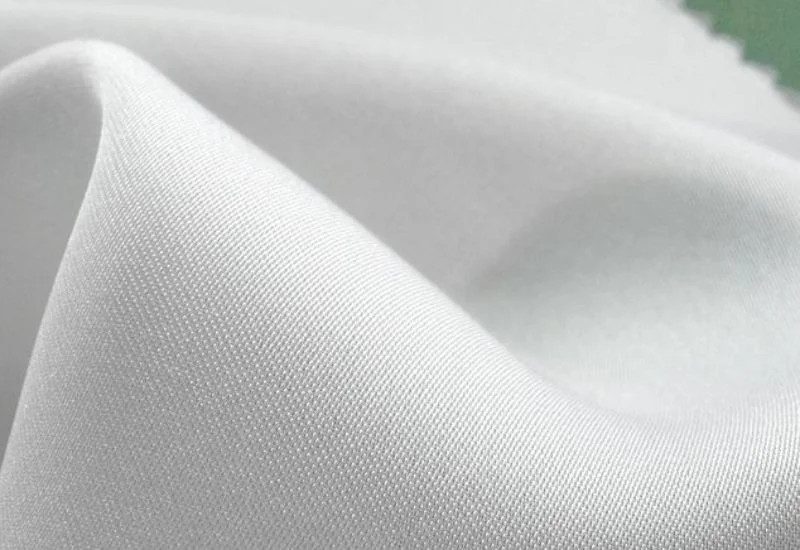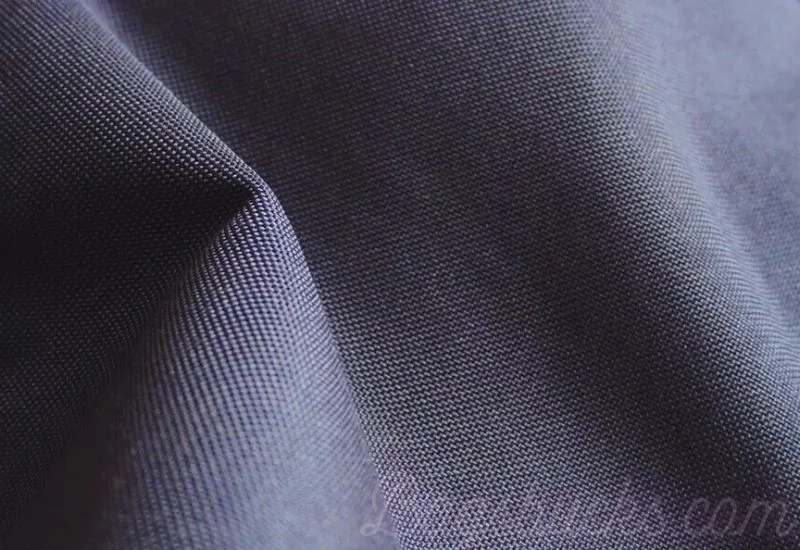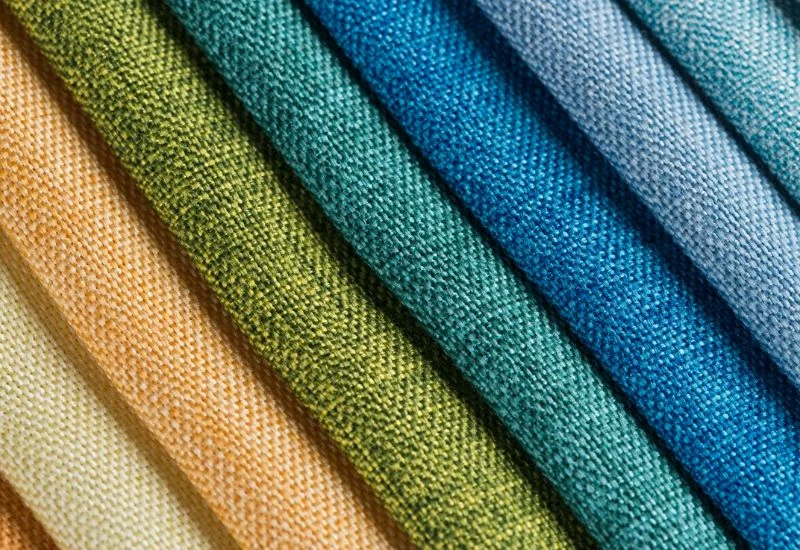
Edited by Abdullah Faraz on July 30, 2024
Designing the perfect bag that meets consumer needs of strength, elegance, and reasonable price is a very challenging thing to do. It is painful when bags deteriorate quickly and do not remain appealing anymore.
Think of your bag splitting right before a business meeting or documents getting wet in the rain. Of course, it is quite annoying, unpleasant, and time-consuming. This is due to illiteracy about the bag materials.
Synthetic materials have dominated the market due to their efficiency and the variety they offer in design and use. Learn how the bags are turning into dependable accessories of the 21st century.
Modern Bags’ Material
Except for natural materials, nowadays, bags are made of different materials, all of which are chosen for some special features and particular use. They can be easily classified into two major groups: natural and synthetic.
Wide use of natural materials like leather, canvas (a firm, closely woven cloth usually of linen, hemp, or cotton), and jute (natural fabric made from the fibers of the jute plant) as they are durable, look good, and are eco-friendly. Natural fibers such as jute are used due to their good looks, naturalness, durability, and degradability; they are common in tote and shopping bags.
Polyester, nylon, polyurethane (PU), and PVC are some of the synthetic fabrics that have completely transformed the manufacturing of bags through their advanced properties. Polyester is favored because it is strong, flexible, and resists wear and stains, making it ideal for backpacks and gym bags.
Nylon, which is lightweight and has very good abrasion resistance (ability to survive against contact with other materials), is widely used in travel and outdoor products.
PU and PVC both act as inexpensive substitutes for leather as they look almost identical and possess the same feel with a cheaper price tag. Here is an in-depth sight at the importance of synthetic materials in the bag manufacturing era;
Significance of Synthetic Materials
Synthetic materials are irreplaceable in the production of most modern bags since they present a number of benefits that natural materials cannot afford.
Polyester and nylon fabrics are preferred in certain bags since they are hard-wearing. This characteristic is most advantageous to the bags that the company uses for traveling and sports activities where weight is a great consideration.
Most synthetic fabrics are water-resistant so they can be used in the manufacturing of waterproof bags.
One of the major benefits of synthetic materials is that they are cheaper, and this enables manufacturers to produce good bags as compared to natural materials. These materials also offer designers the possibility of using different textures, colors, and finishes, hence offering more flexibility in design.
It is easier to maintain synthetic bags, and they rarely fade away or get stained; hence, one does not have to put much effort in order to keep the bags looking new.
Recycled polyester, for instance, is produced from post-consumer plastic bottles and brings sustainability as a characteristic of virgin polyester. In general, the application of synthetic materials has revolutionized the manufacturing of bags and has come up with attractive, durable, and cheaper bags that meet consumers’ requirements.1
Each of the synthetic material has its own benefits in the bags industry;
Types of Synthetic Materials Used in Bags
Following are the major types of synthetic fibers currently used in the bags industry;
Polyester

Polyester is a preferred synthetic material in bag production due to the following properties;
Durability: Polyester is better than natural materials in terms of strength. So it gives durability to the bags.
Water Resistance: Polyester is well-resistant to water. It is used in the preparation of waterproof fabrics.
Versatility: It is widely used in the form of blends with other fibers like cotton and nylon. It enhances its properties like breathability or stretch, molding, and designing options by making polyester suitable for various types.
Affordability: Polyester is a cost-effective material. It is more durable, so it remains best in the long run.
Ease of maintenance: It is easy to clean and dry faster. This property of polyester makes bags best for regular use.
The common uses of polyester in bags are;
Backpacks: Due to durability and lightweight, synthetic materials are the best for backpacks.
Laptop Bags: Padding and frames for protection of electronic items are made of polyester.
Tote Bags: Besides durability, Polyester tote bags are a favorite option because they are folded and placed easily when not in use.
Duffel Bags: Polyester in the composition of duffel bags makes them capable of sustaining rough handling. This makes a tote bag suitable for sports items, gym use, and travel.
Briefcases: Polyester is resistant to wear and tear, so in briefcases, it’s the best option to make them durable and strong.
Fashion Bags: Polyester has a prominent place in the fashion industry. It is used in the manufacturing of fashion bags due to its design-friendly nature.
Nylon

Nylon is a plastic polymer, synthetic material known for its durability, strength and resistance to stress. It was first produced in 1935 and has vast use in textile and engineering materials.
It can be molded and drawn into the fibers. Due to its unique properties, it is helpful in the production of bags. Its durability and strength make it suitable for backpacks and handbags.
Polyurethane (PU)

Polyurethane, abbreviated as PU, is a type of synthetic polymer that appears in various forms, including foams, elastomers, and coatings. It is made up of the smaller units of carbamate (urethane).
It has an elegant texture and flexibility mimicking the character of the leather and rubber respectively. So, it is used in the bags industry widely. It has multiple benefits at a time, like giving a smooth texture like leather to cloth and the durability of polyester.
Polypropylene
It is a thermoplastic polymer, a type of polyolefin that is lighter than polyethylene. It is known for its lightweight and resistance to many chemicals like acids and bases.
It is a widely used packaging material in different industries. It is also used in the bag industry due to its versatility. Its few prominent properties that make it unique in bags are the following;
Lightweight: Polypropylene makes bags lightweight yet strong, making them easy to carry.
Recyclability: It is recyclable, so it enhances sustainability when recycled material is used in bag production.
Cost-effectiveness: It is inexpensive as well as durable. So, it makes a bag cost-effective as compared to other materials used in the production of the bags.
PVC (Polyvinyl Chloride)
A white brittle synthetic plastic polymer is extensively used in textiles, healthcare, and other industries. It is the 3rd most-produced polymer in the world.
Except for durability, versatility, and cost-effectiveness, it is highly water-resistant. This property of PVC makes it a very suitable material for the production of waterproof bags.
Advantages of Synthetic Materials in Bags
Let’s explore in-depth the general benefits of synthetic materials in the bag industry;
Durability
Polyester, nylon, and polypropylene fabrics are synthetic and possess high levels of durability. Synthetic fibers are wear-resistant and, as such, appropriate for the bags that are used frequently and even treated roughly.
This durability makes bags made from synthetic to be strong in that they can pick up strong loads and tough conditions without getting frayed, tattered, or split.2
Easy to Manufacture and Care
Another admirable feature of synthetic materials is that most of them are not very heavy. Certain types of bags, especially those that are made from synthetic materials like polyester and nylon, are usually lighter than other types of materials like leather or canvas.
These are lighter and more comfortable to carry for long, especially by travelers, students, and outside adventure enthusiasts who would desire to carry a minimal load.
Water-Resistant
Durable waterproofing seems to be an inherent characteristic of many of the other synthetic fabrics, and thus, it is appropriate for bags that are likely to be exposed to a lot of water. Fabrics such as nylon and polyester will minimize water absorption, which means that items put inside the bag will not be wet in the case of rain or the spilling of a drink.
Some synthetic bags also receive another coating to make them more waterproof which is suitable for activities such as hiking or traveling.
Cost-Effectiveness
The relatively cheaper synthetic materials also make the Bags relatively cheaper than Bags made from natural materials.
This affordability makes synthetic bags a hub darling for consumers who are in search of bags that are not only useful but durable as well.
Flexibility
The flexibility of synthetic materials is highly flexible in their application. One can design them in a variety of ways and use them for various purposes. It is very flexible and may be stained or painted, printed, and shaped into a myriad of designs and uses, more so shapes and sizes.
This has enabled the designers to come up with bags of different colors, designs, and styles that will suit the consumers. Also, synthetic materials can be blended with other materials in order to improve the corresponding properties, such as inserting a water-repellent layer or increasing the thickness in certain sections for additional firmness.
A list of benefits that synthetic materials offer for the bags is given: durability, lightweight, water resistance, cheapness, and great variability in design. These are some of the advantages of synthetic bags, and that is why they are commonly used and preferred for many purposes in day-to-day life and certain activities.
Disadvantages of Synthetic Materials in Bags
Apart from the many benefits of synthetic materials, they also have many drawbacks. A few of their big disadvantages are elaborated here;
Environmental Impact
Polyester, nylon, and polypropylene are often used in bags because of the material’s strength and the variety of uses it can be used for. Their production and disposal is a huge concern to the environment and the entire natural setting.
Synthetic material facing process is through the extraction of petroleum, which leads to air pollution and the utilization of nonrenewable resources. Synthetic bags are non-degradable. Another danger originating from synthetic products is that they release microplastics into water systems that, in turn, affect marine life and the environment.
Chemical Exposure
Synthetic material production entails the use of several chemicals like dyes, stabilizers, and flame retardants. These chemicals are described as having toxic health effects on the manufacturing employees and the end users or consumers.
Inhalation of certain chemicals also causes skin rash, respiratory problems, and other illnesses over a period of time. Besides, synthetic bags, when they are thrown away and begin to decompose, can discharge toxic substances into the ground and water, therefore polluting food and water.
Heat Sensitivity
In this respect, synthetic fibers are usually known to have higher thermal sensitivity as compared to natural fibers. The extreme heat is usually fatal to synthetic bags as they can expand, melt, or come out of their shape altogether.
This heat sensitivity can be a disadvantage depending on where the computer will be used or transported to, especially to areas with high temperatures or if the owner tends to leave the bag in hot places like a car with the sunlight baking the bag all day.
Furthermore, heat can harm the look of synthetic bags since all the colors in them can fade, or the material in the bag may harden. Thus, the life of the bag is shortened.
Innovations in Synthetic Materials for Bags

Industry experts are trying to make synthetic materials that are better for human beings and environmentally safer. Here are some major techniques that have been discovered yet for this purpose;
Recycled Synthetics
Recycled synthetics are prepared from the waste material of the plastic and natural materials also. This technique reduces waste and environmental impact.
By this method, recycled polyester (rPET) and other fabrics are produced. Such recycled fibers are more durable and cost-effective.
Bio-Based Synthetics
Synthetic materials that are manufactured by the biological resources are said to be the bio-based synthesis. These are made by plants or agricultural by-products instead of fossil fuels.
Bio-based products are environment-friendly and less dependent on nonrenewable resources.
Biodegradable Plastics
The advanced techniques in the modern era of production result in a material like PLA (polylactic acid) giving biodegradable plastics. Compared to traditional plastics, these materials decompose more easily and less harmful to the environment.
Nylon Alternatives
The latest nylon formulations, like ECONYL (regenerated nylon), are making us less dependent on the production of virgin nylon (nylon made directly from petroleum-derived substances).
It is also cost-effective because it’s prepared from recycled materials.
Polyurethane Coated Fabrics
Polyurethane is a plastic material used for the coating of different products. Fabrics coated with polyurethane are more water-resistant.
Such fabrics are used in the manufacturing of bags to make them waterproof. Bags containing the Polyurethane coating survive well in water and moist environments.
Advanced-coatings
Many types of advanced coatings are introduced for synthetic materials to enhance their durability and texture and to make them user-friendly. One of the common and beneficial is Nano-coating;
Nano-coatings provide water and stain resistance to the fabrics. They enhance longevity and sustainability of synthetic bags without using harmful chemicals.
Case Studies of Synthetic Materials Used in Bags

Here are some real-time results and reports of using synthetic materials in bag production by famous brands;
North Face
North Face is a famous outfit items production company that has been working in the industry for almost 60 years. This company has used nylon and polyester in the clothing item, and the following results are shown;
Case Study: The use of synthetic materials like DryVent in backpacks showcases advanced waterproofing and breathability, making them ideal for outdoor and adventure bags.
Herschel Supply Co.
A brand of travel accessories, backpacks, and bags. This is known for its aesthetic, stylish, and functional catalog. This company uses polyester and synthetic blends and has explored the following benefits:
Case Study: The backpacks containing lightweight synthetic fabrics are foldable and can be put into a pocket. In this way, such a collection is more portable and versatile.
Patagonia
An American outdoor clothing and gear production company. It is known for its recycled polyester and nylon items.
This company used recycled polymers in the production, emphasizing durability, and the results are;
Case Study: The Black Hole bags made from recycled polyester exhibit boosted durability and are environment friendly. So, this is an appealing piece for eco-conscious consumers.
Consumer Considerations while Choosing Synthetic Materials
Due to the importance of synthetic materials and their usage in everyday life, consumers should consider some factors when making selections to arrive at the most appropriate synthetic material to use;
Skin-Friendly
Synthetic materials may cause irritation, allergies, or other health issues. So before getting any type of clothing that has polyester, you should confirm your skin -conditions.
If you are an allergic person, then consult your doctor before selecting clothing gear.
Quality Material
I always recommend quality stuff, especially when choosing clothes. Dresses or clothing gear containing synthetic fibers release toxins on degradation. If you choose a low-quality material, it may cause toxicity to the skin.
Comfort
A bag is the most prominent accessory for your outfit. If the bag is not comfortable to wear, it affects your efficiency and overall professional image. So, in parallel with the other parameters, never compromise on comfort while selecting a bag.
Environmental Concerns
Synthetic materials are not eco-friendly products. So, while choosing them try to opt for blends that are not much risky for the environment. After you get such a gear make sure its proper disposal. These steps will help to save the environment.
Conclusion
In the modern era of fabrics where synthetic fibers are occupying space rapidly. The manufacturing of bags is also advanced. Synthetic materials help to maintain the bag’s durability, versatility, and cost while providing millions of customizing options to meet today’s fashion requirements. Bags made of synthetic materials are more appealing and personalized, but a few parameters should be considered.
With the advancement, such innovations are not very healthy or environment-friendly. So, use proper care and knowledge to choose a suitable bag.
Frequently Asked Questions
Bagsbucks provides reliable information with good-quality references to support the facts.
Article Sources
- Technologies for the manufacture of synthetic polymer fibers – ScienceDirect ↩︎
- Life Cycle Assessment of Plastic Bag Production – Researchgate ↩︎
